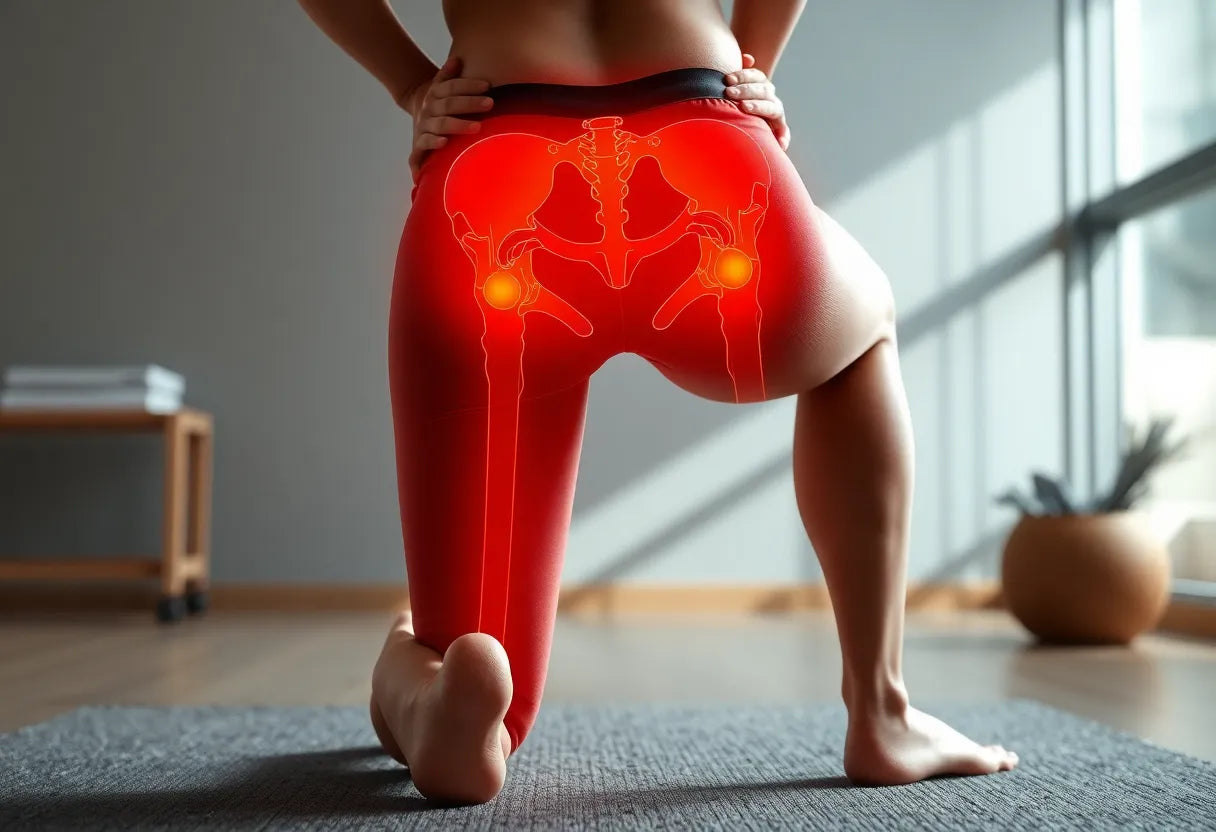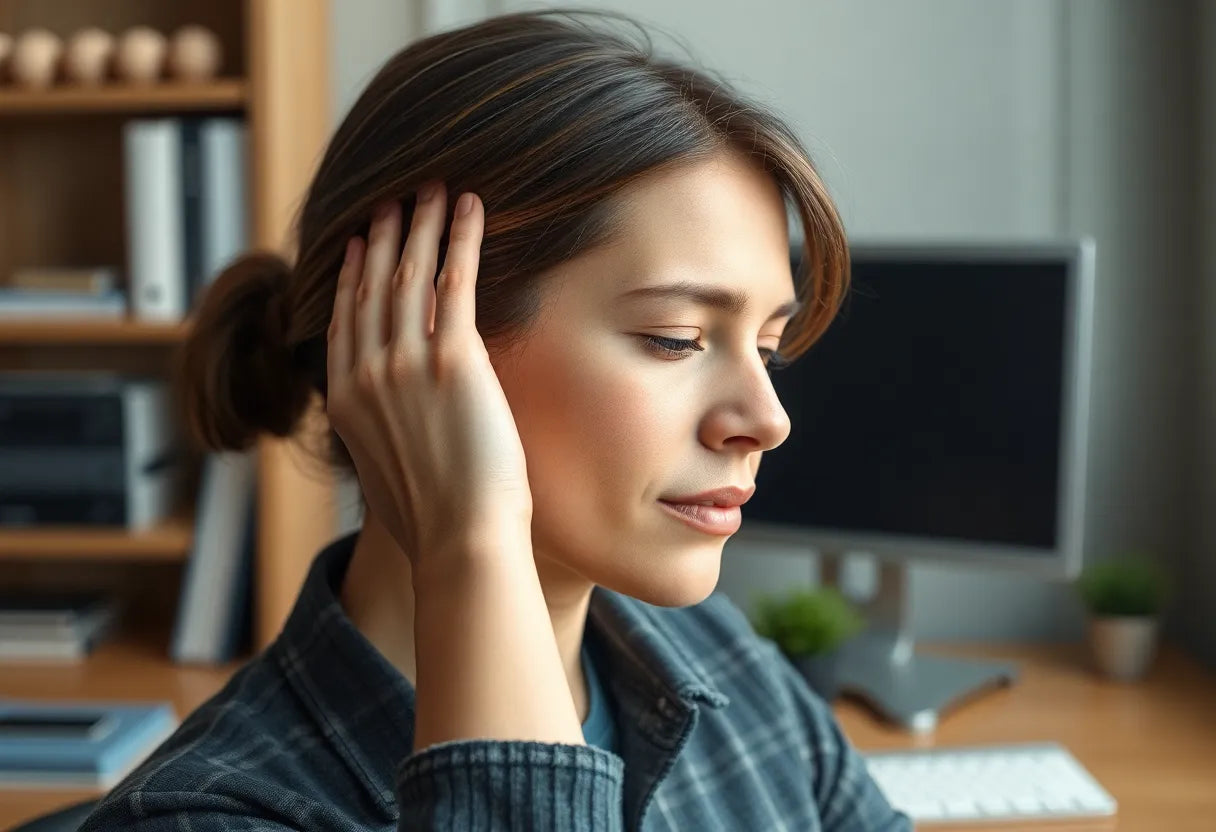When it comes to building a strong, resilient body, one cannot overlook the significance of glute exercises. The gluteal muscles, comprising the gluteus maximus, medius, and minimus, play a crucial role in our overall health, aesthetics, and functionality. These muscles are not just about achieving a well-toned appearance; they are fundamental to maintaining good posture, preventing injuries, and enhancing athletic performance.

Men's Posture Shirt™ - Black
Patented shirt that stimulates muscles and promotes better posture; can relieve tension and pain in neck, shoulders, and back.
importance of strong glutes
Strong glutes are essential for several reasons. Firstly, they support the pelvis and spine, contributing to a stable and upright posture. This stability is vital in reducing the risk of lower back pain and other musculoskeletal issues. Secondly, well-developed glutes act as powerful engines during physical activities, providing the necessary force for movements such as running, jumping, and lifting. This makes them indispensable for athletes and fitness enthusiasts aiming to improve their performance.
Moreover, the aesthetic appeal of toned glutes cannot be ignored. A firm and shapely posterior is often associated with fitness and health, making glute exercises a popular choice among those looking to enhance their physique. But beyond aesthetics, having strong glutes can significantly impact everyday functionality, from walking and climbing stairs to lifting heavy objects safely.
targeting different parts of the glutes
To maximize the benefits of glute training, it is essential to target different parts of the gluteal muscle group through specific exercises. Each muscle in the gluteal region has a distinct function, and engaging them effectively requires a strategic approach. For instance, the gluteus maximus is the largest muscle and is primarily responsible for hip extension and outward rotation. Exercises like hip thrusts and deadlifts are excellent for activating this muscle.
On the other hand, the gluteus medius and minimus are smaller muscles located on the side of the pelvis. They are crucial for hip abduction and stabilization, which are vital for balance and lateral movements. Isolation exercises such as lateral leg raises and clamshells are particularly effective in targeting these muscles.
By incorporating a mix of compound and isolation exercises, individuals can ensure comprehensive glute development. Compound exercises, like squats and step-ups, engage multiple muscle groups and promote overall strength, while isolation exercises focus on specific muscles, allowing for targeted strengthening and shaping.
In the following sections, we will delve deeper into understanding glute activation and explore a variety of exercises that cater to both aesthetic and functional goals. Whether you are a beginner or an experienced fitness enthusiast, these exercises will help you unlock the full potential of your glutes.
understanding glute activation and exercise selection
To effectively enhance your gluteal muscles, understanding glute activation is essential. Muscle activation studies, particularly electromyography (EMG), are invaluable in identifying exercises that maximize muscle engagement. EMG studies measure the electrical activity of muscles during exercise, helping determine which movements best target specific parts of the glutes. This scientific approach ensures that your workout is both efficient and effective, focusing on exercises that yield the highest muscle activation.
When it comes to exercise selection, it's important to differentiate between compound and isolation exercises. Compound exercises, such as squats and deadlifts, engage multiple muscle groups simultaneously, providing a comprehensive workout that builds overall strength and power. These exercises are particularly effective for the gluteus maximus, the largest muscle in the gluteal group, due to their ability to generate significant force and movement.
In contrast, isolation exercises focus on a single muscle group, allowing for targeted strengthening. Exercises like clamshells and fire hydrants are designed to isolate the gluteus medius and minimus, smaller muscles that play a crucial role in hip stabilization and abduction. By incorporating both compound and isolation exercises into your routine, you ensure balanced glute development, enhancing both function and aesthetics.
top glute exercises with instructions
1. Hip thrust
Type: Compound
Muscles Targeted: Gluteus maximus, medius
To perform a hip thrust, sit on the ground with your upper back resting against a bench and feet flat on the floor. Position a weight, such as a barbell, across your hips. Push through your heels to lift your hips towards the ceiling, squeezing your glutes at the top of the movement. Lower your hips back to the starting position in a controlled manner. This exercise is highly effective for activating the gluteus maximus and can be modified with added weight for increased difficulty.
2. Step-up
Type: Compound
Muscles Targeted: Gluteus maximus, medius, minimus
Begin by standing in front of a raised platform or step. Place one foot on the platform and push through your heel to lift your body upward, bringing the other foot to meet the first. Lower back down with control, alternating legs with each repetition. Step-ups are excellent for targeting the entire gluteal region, promoting both strength and balance.
3. Deadlift (traditional, sumo, stiff-leg)
Type: Compound
Muscles Targeted: Gluteus maximus
Stand with feet hip-width apart and approach a barbell. Hinge at the hips, keeping your back flat, and grasp the bar. Engage your core and lift the bar by extending your hips and knees, focusing on squeezing your glutes at the top. Lower the bar back to the ground with control. Deadlifts are a powerhouse exercise for the gluteus maximus, enhancing both strength and muscle growth.
4. Squat (all variations)
Type: Compound
Muscles Targeted: Gluteus maximus, with hamstring/quads involvement
Stand with feet shoulder-width apart and lower your body into a squat position by bending at the hips and knees. Keep your back straight and chest up. Push through your heels to return to the standing position. Squats are versatile and can be varied to target different parts of the glutes and legs, making them a staple in any glute training routine.
5. Lateral leg raise (standing or lying)
Type: Isolation
Muscles Targeted: Gluteus medius, minimus
Stand tall or lie on your side, and lift one leg laterally away from your body, keeping your torso stable. Use ankle weights or resistance bands for added challenge. Lateral leg raises are particularly effective for targeting the gluteus medius and minimus, enhancing hip stability and strength.
6. Clamshell
Type: Isolation
Muscles Targeted: Gluteus medius
Lie on your side with knees bent and feet together. Keeping your feet in contact, open your knees like a clamshell, focusing on engaging the side glutes. This exercise is excellent for isolating and strengthening the gluteus medius, crucial for hip stability.
7. Fire hydrant
Type: Isolation
Muscles Targeted: Gluteus medius, minimus
Position yourself on all fours, ensuring your hands are directly under your shoulders and knees under your hips. Lift one knee laterally away from your body, maintaining a bent knee position. Squeeze your glutes at the top before lowering back to the start. Fire hydrants effectively target the gluteus medius and minimus, enhancing hip mobility and strength.
optimizing your glute workout
To achieve optimal glute development, it's crucial to incorporate a strategic mix of both compound and isolation exercises. Compound exercises, such as squats and deadlifts, engage multiple muscle groups simultaneously, making them highly effective for building overall strength and power. These exercises primarily target the gluteus maximus, providing the force needed for movements like jumping and lifting. On the other hand, isolation exercises like clamshells and fire hydrants focus on the smaller gluteus medius and minimus, which are essential for hip stabilization and abduction. By combining these exercise types, you can ensure a balanced approach that enhances both the function and aesthetics of your glutes.

Lumbar support belt
Adjustable belt for lower back pain relief; stabilizes and supports the lumbar region during daily or athletic activities.
progression and variety in your routine
Progressing your glute exercises is key to continued muscle development and avoiding plateaus. Start by gradually increasing the resistance or weight used in your exercises. For instance, adding a barbell to your hip thrusts or using ankle weights for lateral leg raises can intensify the workout. Additionally, varying the angles and incorporating equipment like resistance bands can challenge your muscles in new ways, promoting growth and strength. Remember, consistency and proper form are crucial to prevent injuries and maximize results.
functional and aesthetic benefits of strong glutes
Beyond the visual appeal of toned glutes, there are significant functional benefits to maintaining strong gluteal muscles. They play a vital role in stabilizing the pelvis and spine, which can reduce the risk of lower back pain and improve posture. For athletes, strong glutes are crucial for enhancing performance in activities that require explosive power, such as sprinting and jumping. Moreover, well-developed glutes contribute to better balance and coordination, which are essential for everyday activities and injury prevention.
frequently asked questions
why are glute exercises important?
Glute exercises are important because they support daily activities, improve posture, and help prevent injuries. The gluteal muscles are involved in movements like walking, running, and lifting, making them essential for overall functionality and health.
how often should I train my glutes?
For optimal results, it's recommended to train your glutes 2-3 times a week. This frequency allows for adequate recovery between sessions, which is crucial for muscle growth and strength development.
can I train glutes without equipment?
Absolutely. Many effective glute exercises, such as clamshells and fire hydrants, can be performed without any equipment. These exercises are great for targeting the gluteus medius and minimus, enhancing hip stability and strength.
what should I do if I feel pain during exercises?
If you experience pain during glute exercises, stop immediately and assess your form. Persistent pain should be evaluated by a healthcare professional to rule out any underlying issues or injuries.
how long will it take to see results?
Visible changes in your glutes can take several weeks to months, depending on factors like your starting point, consistency, and overall fitness routine. Patience and dedication are key to achieving your fitness goals.
Kilder
- Reiman, M. P., & Manske, R. C. (2020). "The Assessment of Function in the Human Lower Limb." Journal of Sports Medicine.
- "Effective Glute Exercises." Elevate Physical Therapy and Fitness.
- Distefano, L. J., et al. (2009). "Gluteal Muscle Activation During Common Therapeutic Exercises." Journal of Orthopaedic & Sports Physical Therapy.
- "The Best Glute Exercises for Size, Strength, and Activation." Built With Science.
- "Program Design Considerations for Optimal Strength and Hypertrophy in the Glute Muscles." National Strength and Conditioning Association.
- "Glute Exercises to Try at Home." Cleveland Clinic Health Essentials.
- Macadam, P., et al. (2020). "An Evidence-Based Review of Hip-Focused Resistance Exercise for Gluteal Muscle Hypertrophy." Journal of Sports Science & Medicine.


















